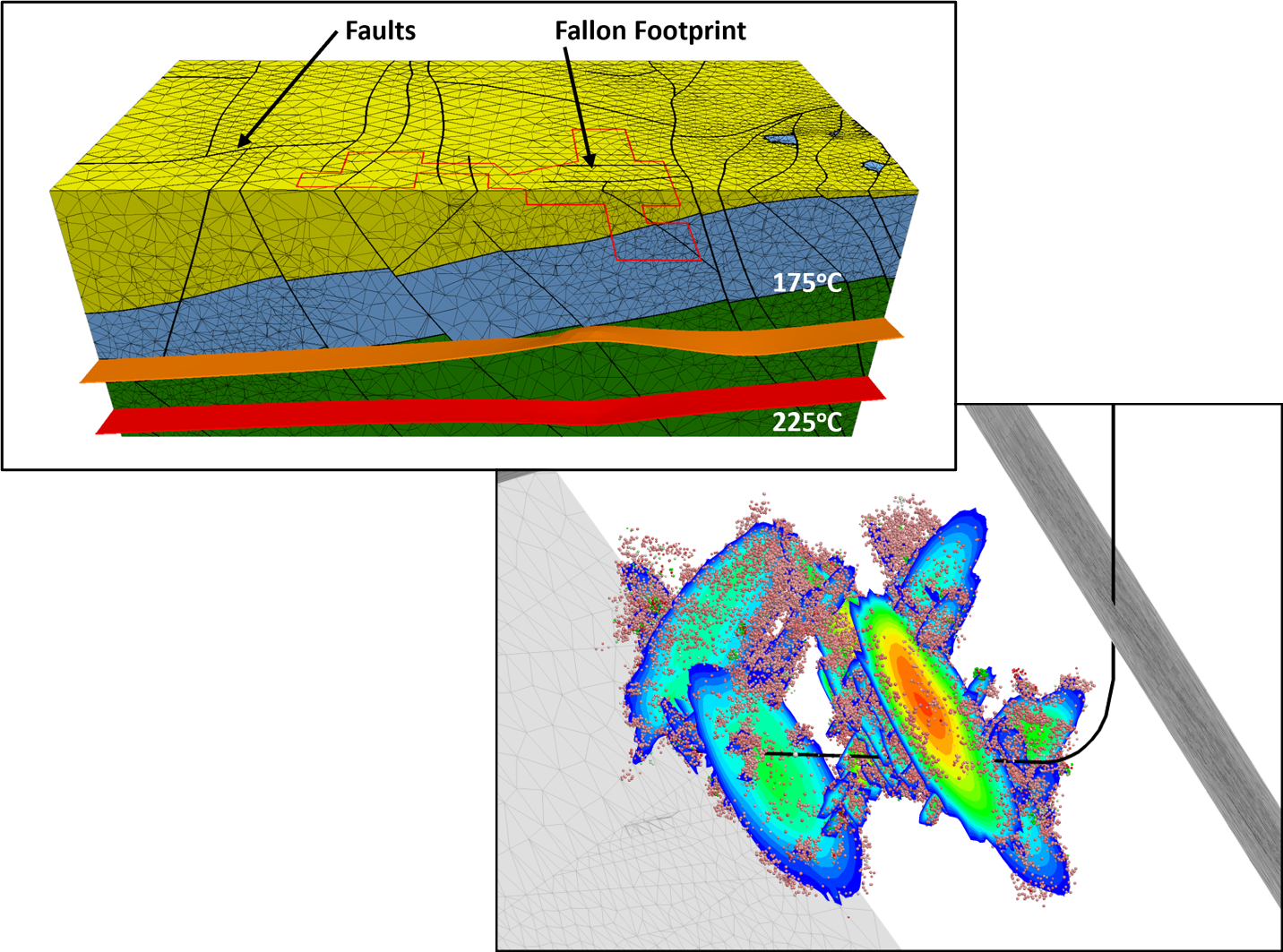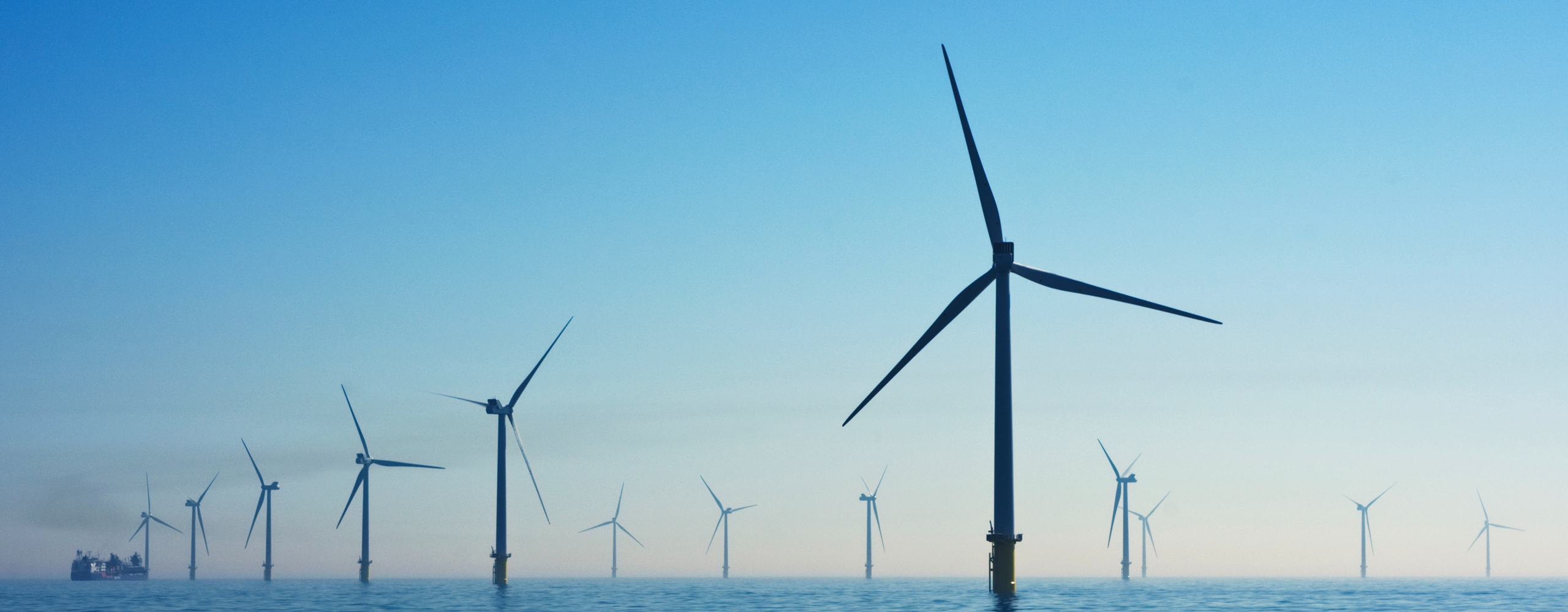Conceptual EGS Reservoir Design with Natural and Induced Fractures
PROJECT DESCRIPTION
A U.S. Department of Energy (DOE) program, FORGE (Frontier Observatory for Research in Geothermal Energy), identified two potential EGS (enhanced geothermal systems) sites: Fallon FORGE and Utah FORGE.
ITASCA was tasked by Sandia National Laboratory, the project lead, to simulate the proposed Fallon FORGE site reservoir, which included induced and natural fractures, to inform different conceptual designs for well geometries and stimulation strategies.
ITASCA’S ROLE
ITASCA used 3DEC to run a suite of coupled Thermo-Hydro-Mechanical (THM) models that considered the geological site characterization and the U.S. DOE’s operational objectives.
A reservoir-scale 3DEC geomechanical model included the effect of fluid on a natural joint network (pressure-induced slip or “hydraulic shearing”) and on propagation of hydraulic fractures (tensile failure ahead of a fracture tip). To provide flexible options, a multi-stage hydraulic stimulation along sub-horizontal wells was utilized.
PROJECT RESULTS
Modeling results indicated that the Fallon FORGE site is well suited for hydraulic stimulation of an EGS due to orientations of the natural joint network in the regional principal stress field; joints are preferentially dipping at an acute angle to the maximum principal stress (vertical) and with a strike semi-parallel to the direction of the maximum horizontal stress.
Simulated microseismicity, analogous to field measurements, show that the conceptual production wells are within the stimulated volumes of the treatment designs. The microseismicity observed in the models is strongly dependent on the size and properties of the fractures combined with the injected fluid volume.
The geomechanical simulations show that the natural joint network plays a significant role in the permeability enhancement of EGS and, therefore, the success of developing a FORGE reservoir.

REFERENCES
Pettitt, W.S., Hazzard, J., Riahi, A., Maxwell, S., & Blankenship, D. (2018). Simulated microseismicity in geomechanical models with natural and induced fractures. SEG Technical Program Expanded Abstracts : 2992-2996. LINK

